The Atrium Light Newsletter #1
Welcome to our new newsletter. I hope you enjoy our sharing and encourage you to continue to pray for and support our work in Western Australia
Welcome to our new newsletter. I hope you enjoy our sharing and encourage you to continue to pray for and support our work in Western Australia
Information Evening
The Catechesis of the Good Shepherd provides a sacred space for Christian faith formation of children aged 3 to 12 years. It is like a retreat centre for children, providing a place where they can form a personal relationship with Jesus, the Good Shepherd. As well as formation and faith enrichment for adults, we also provide sacramental retreats. The Catechesis is grounded in scripture, and liturgy guided by the understanding of the child discovered by Maria Montessori. Children and adults hear the Gospel through the use of sensory-rich materials. It is a place of community and worship, a place to be with and enjoy God, listen to the Word, and to pray.


Find out more about the work of the Catechesis of the Good Shepherd and our approach to faith formation of children and adults in this evening. Supper is included in the evening.
31 October 2023
7.30 – 9.30pm
27 Lalor Street, Scarborough
Email goodshepherdwa@cgswa.org,au to book

NOTICE OF ANNUAL GENERAL MEETING
13 September 2023
7.30pm (for 7.45pm start)
Catechesis of the Good Shepherd WA
27 Lalor Street, Scarborough
And
Via Zoom (online)
Please let us know when you RSVP if you require the zoom link
Please RSVP and send Nominations to
NOTICE OF ANNUAL GENERAL MEETING
Notice is given that the Annual General Meeting of Members of Catechesis of The Good Shepherd WA (Inc) (CGSWA) will be held at Catechesis of the Good Shepherd WA, 27 Lalor Street, Scarborough, commencing at 7.45pm on 13 September 2023.
AGENDA
1. Open Meeting
2. Attendance: Present/Apologies
3. Prayer Reflection
4. Sharing: Former Children of the Atrium
5. Acceptance of Previous Minutes
6. Business Arising
7. Report from the Chair (Anne Diamond)
8. Finance Report (Christine Giuffre)
To table and consider the financial accounts for year ending 30 June 2021
9. Election of Board Members
Chair, Vice Chair and Secretary and other position/s (members who will help serve the ongoing needs of CGS within WA and in Australia especially in areas such as finance, management, promotion).
10. General Business
Members may discuss general business items with the Board
11. Closing Prayer
12. Conclude with Supper
Dated 23 August 2023
ON BEHALF OF THE BOARD
Catechesis of the Good Shepherd WA (Inc.)
Marie Fernandez
Secretary

On October 22, 2022, the day dawned on a beautiful sunny Spring day. The Catechesis of the Good Shepherd, held our inaugural Spring Fair at the Floreat Scout Hall, Draper Street in Floreat. Our little team or helpers who had been working hard behind the scenes for the months prior to the event were there until the end helping carry goods, building marquees and cleaning tables from 7 in the morning.
Our various stallholders arrived with their amazing merchandise and to entice all of the visitors we also had Greg cooking delicious sausages generously donated to us by Provenance Quality Meats Floreat .
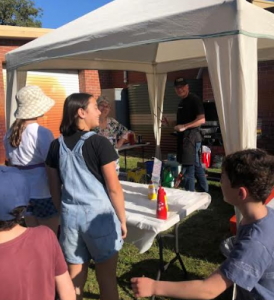
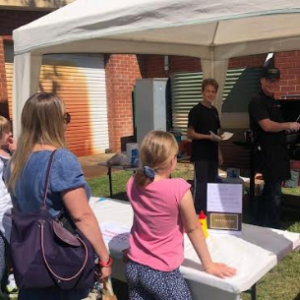
Other goods donated such as tea coffee, bread and sauce from Coles and Woolworths at Floreat and our lovely parents from the Catechesis Community who baked delicious cakes to enjoy with our drinks.
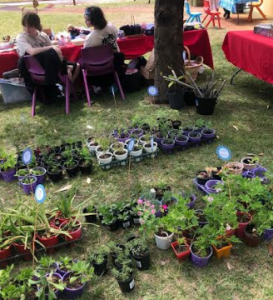

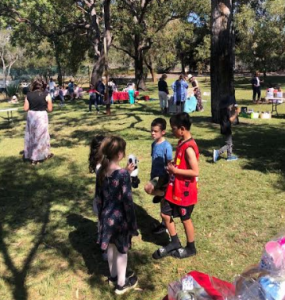
Our raffle was a great highlight with more generous donations from The Floreat Market who gave us a hamper of goodies, Thriving Minds Education and other generous donations from our Catechesis of the Good Shepherd Community.

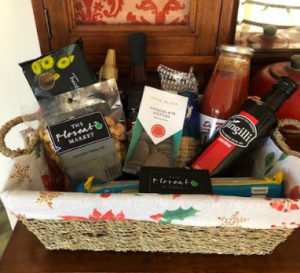
Many people commented on the lovely caring spirit of all who participated as sellers, volunteers and visiting shoppers. Some of the lovely items included, handmade crafts, plants, jewellery, home made skin care, woodwork, Catholic merch, St Rita’s bookshop, Gloria Online, Rosary Beads, Lucyagatha, Candles, Games, Second Hand books, Toys, Cakes and Tea and Coffee and a Sausage Sizzle.


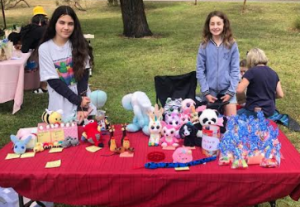
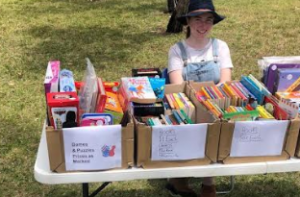

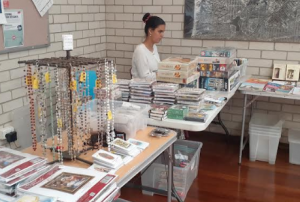
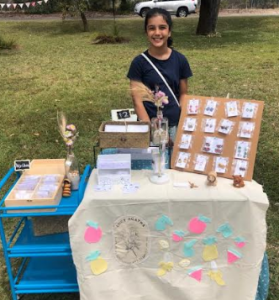
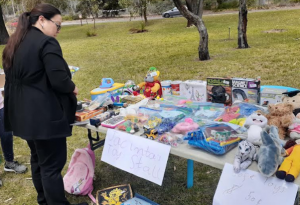
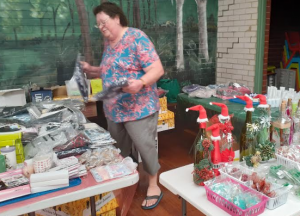
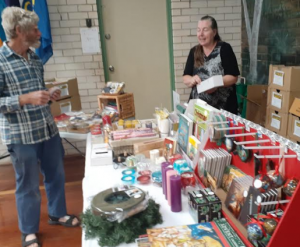

Although we had some definite teething problems, particularly with dealing with people who did not have ready cash, and with knowing how much food and change we needed, we considered the day a success with many new friends and connections and a small profit for our Association.
It is hard to try to name everyone who helped on the day and in the lead up to the event, but I would particularly like to thanks the Floreat Scout Hall for the use of such a lovely facility, and the City of Nedlands for allowing us to host the event.
We hope to make this an annual occasion.
We are excited to share with everyone that we are soon to have a new, more spacious space to share the Catechesis of the Good Shepherd with children and adults.

After lengthy negotiations with the Archdiocese of Perth we have finally managed to secure a long term lease on a premises in Scarborough. This has been out of use for some time and requires some major renovations to suit our needs. However, once completed we will be able to offer Catechesis for children from 0-12+, and have a good space for running formation and retreats, as well as a beautiful chapel space.
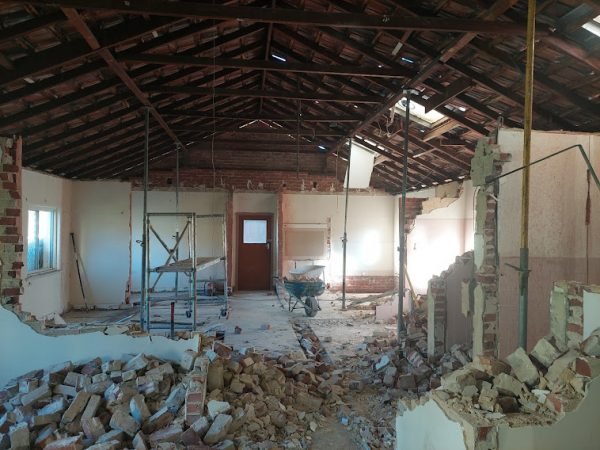
Our plan is to have the renovations completed by the end of 2022 so that we can move over the Summer break into our new space.
With our new space there will be new challenges such as fundraising to cover costs involved with the bigger space. As always we continue to work hard and pray hard and trust in Jesus the Good Shepherd to guide us and send us the help we need to continue to offer this precious work.
We invite all of our supporters and friends to continue to travel with us on this wonderful adventure in listening to God with children.
As we move towards Holy Week and this years’ Lenten fasts seem to be including Mass as well, let us meditate on what is most precious to us in this most holy of seasons.
With your family, prepare a sacred space with a prayer table and perhaps some sort of diorama that tells the story of Easter. Just as we do at Christmas. Perhaps using a box or paper prepare the space where he will be laid. Have a last supper area, a way of the cross. Get everyone involved in making this celebration more meaningful and personal in a way that brings the responsibility home to you.
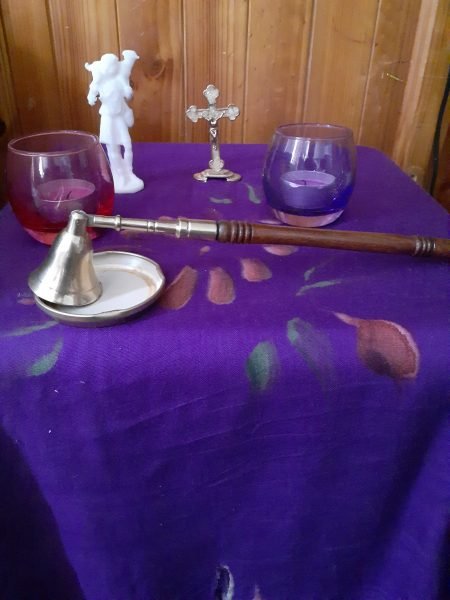
I have been noticing suggestions for Palm Sunday, such as putting a branch on your door to show that you are celebrating the feast. I invite you to go even further. In the church we call the coming Sunday Passion Sunday, the day we read the passion of Jesus from the Gospel of Matthew (Matthew 26:14-27:66). As it happens, the Gospel we read at the beginning of the Mass on the entry into Jerusalem of Jesus on a donkey is also from Matthew (Matthew 21:1-11). What if you begin as a family reading the Gospel of Jesus entering Jerusalem at your front door (just as we do in Mass) and then lay your palms on your doors or near your entry way? This then makes your house the place where the event will occur in holy week.

Your family can journey through holy week reflecting on each of the four Gospel writings on the passion. Perhaps you may reflect on how similar or different they are from on another and how with all of the versions we get a fuller account of the message of Jesus.
Back to Passion Sunday. Read ALL of the readings (Isaiah 50:4-7, Psalm 22:8-9,17-18,19-20,23-24), Philippians 2:6-11). As the first Gospel proclaims what happened on Calvary was to fulfill what the prophets had said. You get a picture painted of what is to come and that it is all part of the Plan of God. The Psalm could be written out and the response shared by the family.
My God, my God, why have you abandoned me?
Did God truly abandon Jesus? Was his pain and suffering, his death, all for nothing? We see that it is through suffering that God works his greatest work. In Jesus’ suffering and death, death (not Jesus) was overcome. Now we know that we will never die forever but will rise to eternal live with him. Sounds like cause for excitement for us all who are suffering at this time. From the darkness God brings his light. And in that light, darkness flees, the light overcomes the darkness EVERY TIME. As we pray this psalm, we can reflect that, yes Jesus suffered and maybe even felt abandoned, but we also know Jesus knew this psalm and he was aware that God had a plan for all of us. A plan that required us to pay a price and a plan that would be so much more than we could ask or imagine.
The verse before the Gospel shows us:
“Christ became obedient to the point of death,
even death on a cross.
Because of this, God greatly exalted him
and bestowed on him the name which is above every name.”
With a small amount of preparation, you could then share out parts for the reading of the Gospel, according to the reading ability and the sensibilities of your children and household members. If you have a small household, you could link via video with another household (or two) to share this retelling of a narrative so central to our faith. This story of our Salvation.
A time of final preparation. A time to reflect. Prepare a quite space to pray individually and as a family. Prepare candles to be lit to show the light of the risen Christ who is stronger than the darkness of death. You could have one for each family member. They could decorate them with their name or own unique symbols.
Some ideas for decorating candles could include
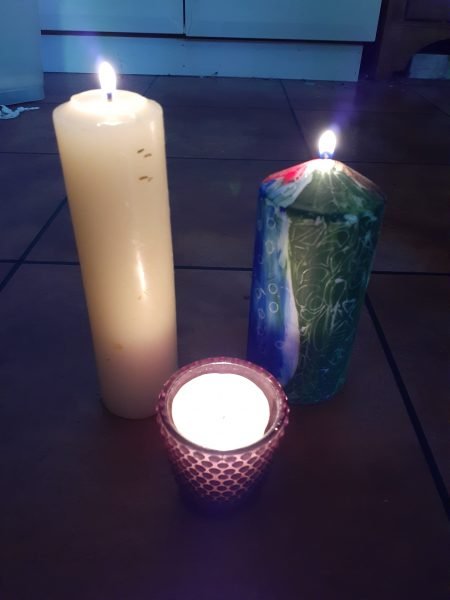
Again, reflect on the readings for the Mass. Prepare a meal for your family in which you remember the events on that night. The words of Jesus. As you read about breaking bread, share the bread on your own table. It is not the Eucharist, but the people gathered are the Eucharist for one another. Just as Jesus shared his body with us, we share our lives with one another.
To help you here are the readings for Holy Thursday, read them and reflect on them with one another.
Exodus 12:1-8, 11-14
Psalm 116:12-13, 15-16, 17-18
1 Corinthians 11: 23-26
John 13: 1-15
Wash one another’s feet. Serve one another.
Set up a family roster to pray all through the night.
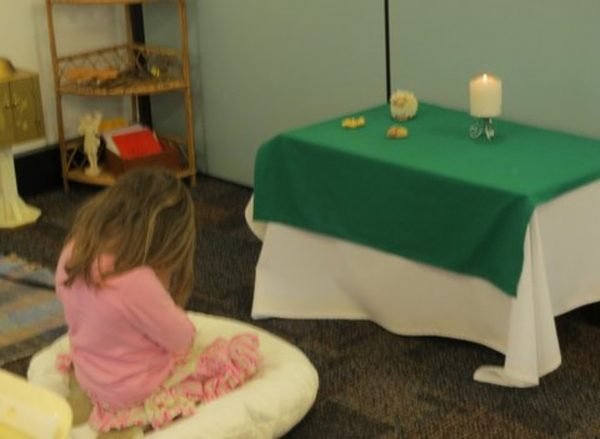
The way of the cross. Get the family to help prepare the stations of the cross around your home. Each place is prepared and reflected on by the same person. Get family and friends to do a station each and share the prayer via video chat. There are many great resources to help you reflect on each station, but make it personal, make it understandable. Imagine yourself as a witness to the events for each station. Pray for the world, pray for yourself, pray to have the courage and love of Jesus.
Wear red.
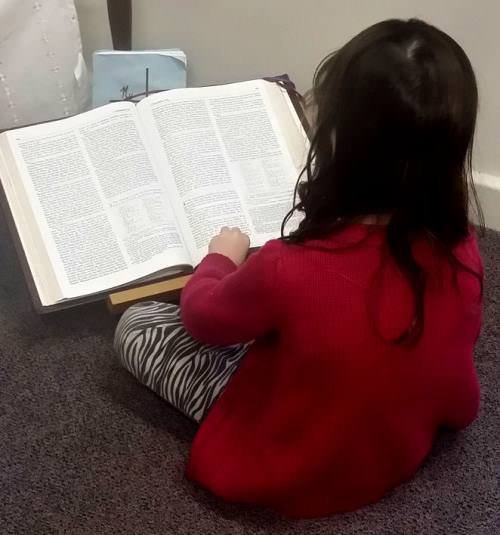
The readings from the liturgy for Good Friday are:
Isaiah 52:13-53:12
Psalms 31:2, 6, 12-13, 15-16, 17, 25
Hebrews 4:14-16; 5:7-9
John 18:1-19:42
Be still. Have a time of silence with the whole family stopping normal activities and just being still with Jesus.
This is the most wonderful of liturgies, the High Mass of the year. We recall our history and we look forward to life in glory with God.
The vigil begins with a liturgy of light, where we see the light of the resurrection growing larger to chase away the darkness. You can use your candles you made here. Darken your rooms and light the candles and see how the darkness is chased away. Sit silently and enjoy the new light as it begins to fill all of creation. There are many beautiful prayers in the liturgy and you can see them here. http://liturgies.net/Liturgies/Catholic/roman_missal/eastervigil.htm
What a great opportunity to enjoy all of the readings and psalms, a feast for us of God’s word and his work throughout all of time.
Spend time together with these words.
Then celebrate
Alleluia he is here!
Make Alleluia posters to put all over the house. Finally, we can sing for joy. He is alive and our salvation is at hand.
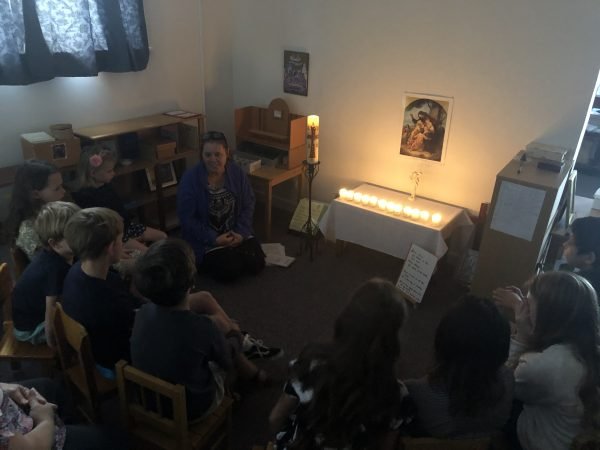
If you have built a tomb, crack it open.
We begin the party today. This celebration will last 50 days. Have you stocked up for it? Have you filled your home with Jesus life and light? Stockpile his love so that you can share. As you contact family and friends, begin with Allelluia!
Have your egg hunts and your chocolate, but even more fill yourself with the power of rebirth, a new life is here for all of us. It is awaiting us as we too will rise from our hiding places.
Go outside and shout to your neighbours
“Allelluia, he is risen indeed!”
“God’s not dead, he is alive”
Enjoy this Video
As we are all over the world being asked to go into exile from our normal day to day business. We are asked to only have contact with those in our households, our families. We are asked to look at what is essential and do that, buy that. What a great opportunity God has provided us with in the Lent of 2020. Just as Jesus was called into the desert before the major part of his life’s’ work commenced, we are called to go into a different desert also, a desert of suffering and pain (for some physical others spiritual and others emotional). Many have been asked to stay away from things we hold very dear such as Mass.
God has been speaking to me about all of this in some songs.
I recall a song I learned many years ago by a group called The Dameans, “Pause a While”
Pause a while, pause a while
In the humdrum of the city and behind a cloister wall
In the early morning and when shadows start to fall
See creation bending to the maker of it all
And all we have to do is pause a while
We were made to build the earth and share it with each other
All of us together at the work of Christ our brother
Tho’ the troubles of the world may tempt you to despair
Look around just
one more time and you’ll see Christ is there
Ev’ry tree
in ev’ry valley, ev’ry running brook
Bear the mark of
Love’s design for those who learn to look
The spirit
promised long ago moves just where he will;
In this high-speed,
neon world, somehow he’s moving still
Barriers of
ev’ry kind, must shatter into dust;
Nothing done is
nothing won where we can’t dare to trust
I noticed as these lyrics floated in my mind that God was calling on his people all over the world to Pause Awhile, to stop and listen to just be still. As we pause, all of creation is being renewed, life is returning to places we have neglected or damaged by our busy lifestyles. The smog is lifting in some places, wildlife is returning to city areas. https://twitter.com/ikaveri/status/1239660248207589383

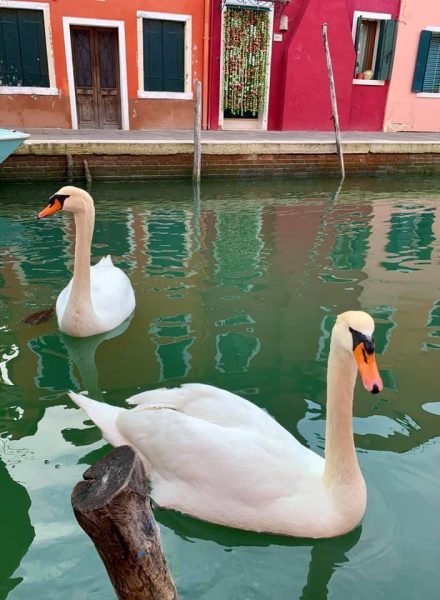
With our children in the atrium, we finished a little early with the Liturgy of Light. We recalled Jesus sharing his light with us all and asking us to share it also with others. The light will grow so bright, that the sun will be dimmed. All of the darkness will be chased away. We sang some songs that reminded me of God’s plan to bring his life and light to all people, everywhere.

Christ Be Our Light (Bernadette Farrell)
Longing for light, we wait in darkness
Longing for truth, we turn to You.
Make us Your own, Your holy people
Light for the world to see.
Christ, be our light!
Shine in our hearts.
Shine through the darkness.
Christ, be our light!
Shine in Your church gathered today.
Longing for peace, our world is troubled
Longing for hope, many despair.
Your word alone has pow’r to save us.
Make us your living voice.
Shine Jesus Shine (Graham Kendrick)
Lord the
light of Your love is shining
In the
midst of the darkness shining
Jesus Light
of the world shine upon us
Set us free
by the truth You now bring us
Shine on me,
shine on me
Shine Jesus
shine, Fill this land with the Father’s glory
Blaze
Spirit blaze, Set our hearts on fire
Flow river
flow, Flood the nations with grace and mercy
Send forth
Your word Lord and let there be light
Lord I come to Your awesome presence
From the shadows into Your radiance
By the blood I may enter Your brightness
Search me try me consume all my darkness
Shine on me, shine on me
As we gaze on Your kingly brightness
So our faces display Your likeness
Ever changing from glory to glory
Mirrored here may our lives tell Your story
Shine on me, shine on me
Alleluia, Alleluia, give thanks to the risen Lord (Donald Fishel)
Alleluia, Alleluia, give thanks to
the risen Lord,
Alleluia,
alleluia, give praise to His name.
Jesus is Lord of all the
earth.
He is the King of creation.
Spread the good news o’er all
the earth.
Jesus has died and has risen.
We have been crucified with
Christ.
Now we shall live forever.
God has proclaimed the just
reward:
Life for all men, alleluia!
As I sang and pondered these words, I was amazed at how clear the message for me was. “Do not worry, my light is stronger than the darkness, my life is stronger than death.”
Pause a while and soak in his light so that when the time comes you will rise radiant in his splendor to shine and fill the earth. It is the desert before the ministry. The darkness that is overcome by the light.
This pause, now, becomes a time of great hope and renewal for all of creation. I am filled with joy and hope.
Inviting a visitor to “come and see” has often been the best way to “explain” what the Catechesis of the Good Shepherd is. When invited in, an adult will become quiet and wonder at all the different materials they can see. One material may catch their eye, something familiar, the altar table, the Cenacle. Just like the children who first walk through the doors, the adult longs to look with their hands, to open boxes and see what treasures are contained within. Perhaps, less like the child, they hesitate in case they are not allowed to explore further. Left alone, they may take things off the shelf and pick up the contents for closer inspection. They may get their phones out and take a few photos.






The first encounter in an atrium is one of wonder and perhaps awe. If parents walk in with a child, they like to share their knowledge of what they see, moving into teaching them the names or concepts the adult relates to in the work. Little children first seem to like to touch, to feel what has been prepared for them. They long to know, “Who made this?” They know it is a space for them because everything is just the right height and size for their smaller bodies. In the Catechesis of the Good Shepherd it is the environment that becomes the teacher. The young children learn more from interacting in their environment than through direct instruction. That is why it is so important that the catechist prepares the environment to entice the children to draw nearer to God and to form a loving relationship with Jesus, the Good Shepherd.
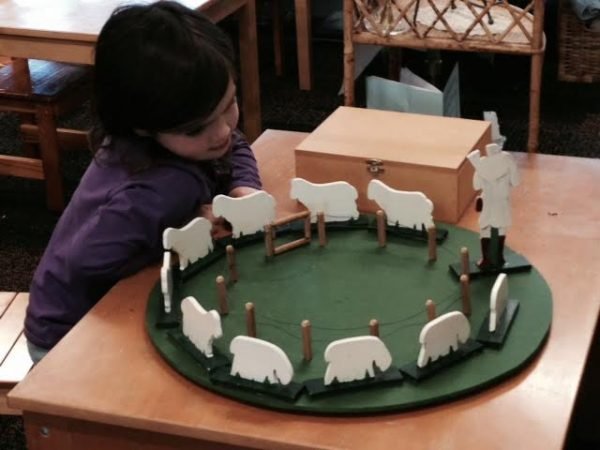
If our goal is to help children enjoy a relationship with God, we must consider carefully the question, “What kind of environment will respect and cultivate their needs and capacities at their level of development, especially in terms of their spiritual development?”
The atrium therefore is not a classroom “not a place of religious instruction, but of religious life” (Sofia Cavalletti, Religious Potential of the Child). It does not replace the Church but instead prepares them to become full participants in the life of the Church. This work cannot be the work of the catechist or the atrium alone. As Sofia says “The initiation of a child into the Christian life is not a work that can be fulfilled by the catechist alone, nor by the parents alone. It is the whole Christian community that proclaims Christ, and the child must enter into contact with the whole Christian community. The catechist’s work… must be sustained and confirmed by a community that lives what the catechist proclaims.” Ideally the atrium should hold a place within a parish community.
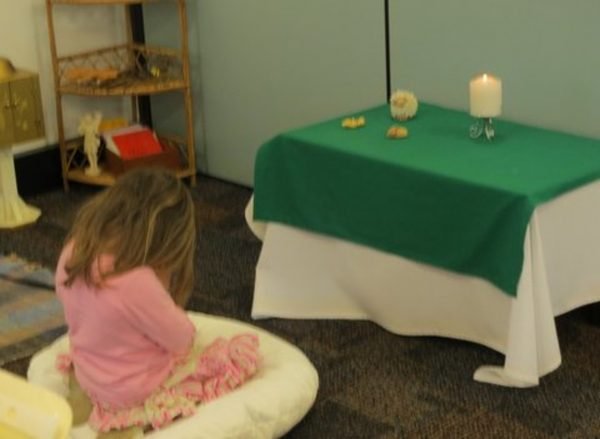
The Atrium is a place of Prayer and Worship, a place of quiet and peace, a place of retreat. A place where quite spontaneously, work and study become meditation, contemplation and prayer.
We invite you to come and see the space we have prepared for the children. You will find the details on our website. https://www.cgswa.org.au/events/
Or you can contact us via email goodshepherdwa@gmail.com to make a time to visit.
Often when people want to be formed as catechists in The Catechesis of the Good Shepherd, they make arrangements with a formation leader to come and give the formation. This involves some organisation and some cost. So why does The Catechesis of the Good Shepherd recommend that two formation leaders give formation? Doesn’t that make it harder and more expensive?
First of all, anything that we have to invest time and money into will be valued higher than something given for free. There is something in our human nature that values something that costs us over that which is given to us. The Catechesis of the Good Shepherd is like a Precious Pearl (Matthew 13:46) which a merchant searched for his whole life until he finally found it, then he sold everything he had to buy that pearl. Sometimes it may be more like a Hidden Treasure (Matthew 13:44) which we discover by accident in a field, then sell all to buy it. Whether we are searching for it or just come across it we find it is a treasure worth paying for.

Having two people give formation is a blessing both for the new catechists and for the formation leader. For the catechists, it allows them to see two different styles of presenting which helps to break the “script” idea that some tend to have when first beginning in The Catechesis of the Good Shepherd. There is a richness is being able to experience different approaches and styles and seeing the individuality of each Catechist as part of the gift (perhaps part of the wrapping) without changing the essential elements.
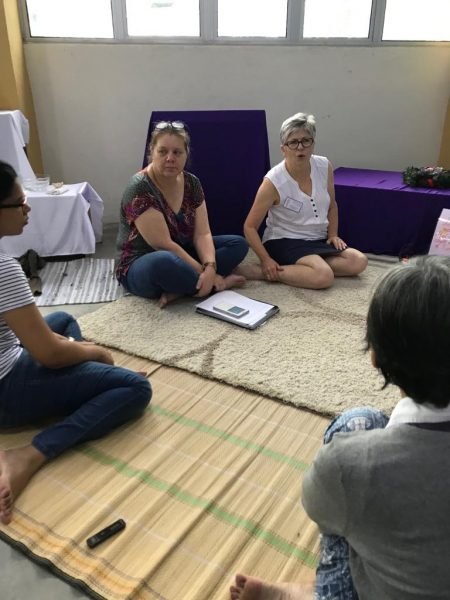
Two people presenting and reflecting, is also a way of overcoming listeners fatigue. Hearing a change in voice or having opportunities to divide up the reflections and promote discussion is also a catalyst for all participants to share their thoughts and discuss the work. Two people bring two sets of skills to offer. For example, one may be better at materials making, another may suit the pastoral needs of individuals better, etc. Two people also help to keep the formation from going off on a tangent or spending too much time in a discussion.
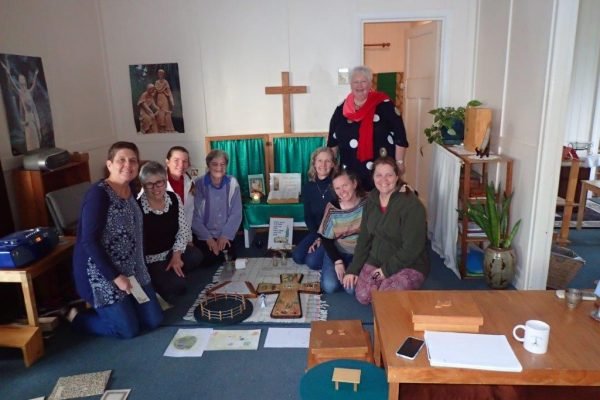
Jesus when he sent out his apostles to share the good news, sent them out in pairs (Mark 6:7, Luke 10:1). I wonder why that would be? Would it not be easier for people to host just one apostle? Would they be able to cover twice as much ground if they went alone? So why would he choose that model? Perhaps the answer is also given by Jesus when he says, “Where two or three are gathered in my name, there am I in their midst” (Matthew 18:20). Perhaps the answer lies in the need to have a second witness to enable people to see the word as truth.
I see the gift of having someone else on the team as someone to support me when I cannot find the words to answer a question, or when I need an experience to illustrate a point, but the memory does not come to mind. Sometimes people have questions or challenge the method and having someone there with you to problem solve helps. Sharing the load also makes the formation leaders more available to the participants and better meet the needs of the group. Each evening there is time to reflect together and choose the direction of the coming day, so that the formation is individualised to the needs of that particular group of catechists.
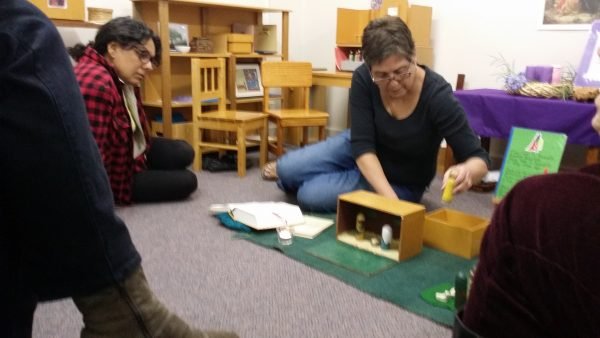
But I can see that there is something else that having two formation leaders gives. It brings the presence of the love of Jesus. Two people can model in their relationship the love of Jesus and the gift of friendship which is a charism of this work of The Catechesis of the Good Shepherd.
In the Catechesis of the Good Shepherd, especially with the 3-6-year-old, we do not dwell on Jesus’ suffering and death. Instead we always link his death to his resurrection. Many of the works allow a time to recall that Jesus life was stronger than death and we remember that whenever we light candles, and most especially the Paschal candle in the Baptism Area. The light of the risen Christ is given to each one of us on the day we are Baptised.

There are, however, a few works that are particularly relevant to this Lenten season and in particular to the Paschal Narratives which we encounter during Holy Week. In the atrium of the youngest children, we recall the words of the Last Supper, where Jesus said, “This is my body, this is my blood”, in a work we call the Cenacle. The Cenacle is the name for the Upper Room where Jesus met with his disciples to celebrate the feast of the Passover. The children enjoy preparing the small table as the Apostles did on that day. They sit and consider the words of Jesus and the events that unfold after this time. We pause briefly to consider Jesus’ death on the cross. Then we move on to light candles to recall the resurrection. After all everyone dies, but only Jesus conquered death.

Another work in the atrium which allows us to consider the last days of Jesus is the City of Jerusalem. This is a model of what Jerusalem may have looked like during the time of Jesus. It is a walled city and the most prominent building is also walled, the Temple. This geography material allows the children to imagine the sort of place Jerusalem was., but its primary purpose is to recall the last days of Jesus. The children consider the places and events that occur in Jerusalem beginning with the Last Supper in the Cenacle and moving to the garden of Gethsemane, where Jesus prayed and was later arrested.

We recall that Jesus was taken to the house of Caiphas, the high priest. He was put on trial there. Next, we move to the place where Pilate, the Roman Governor lived, the Tower of Antonia. Those who arrested Jesus, told Pilate that Jesus said he was the King of the Jews. Pilot decided that Jesus should be sent to Herod, the Jewish king.
We continue the meditation; in the morning, he was taken to Herod’s palace. Herod did not have the power to do anything to Jesus, so he was sent back to Pilot. Jesus returned to the Tower of Antonia to be sentenced by Pilot. There he was condemned to die. He was given a cross and taken outside the walls to a hill called Calvary.
This is where he died. But that is not the end of the story.
His friends buried him in a cave, a tomb never used before, and a big stone was placed at the entrance. It was in a garden. This was still not the end.
It was the Sabbath day so they would not prepare his body, they needed to wait until the next day to do that.
Always looking forward we recount the events leading up to that first Easter morning.
The next day some women came back to prepare Jesus body for burial, they planned to anoint it with special oils and perfumes. Then wrap it in a special way, as was their custom. They were worried about how they would be able to move the stone away.
When they got there the stone had already been rolled away. An angel was there, and he said, “Jesus is not here, he is risen!”
At this point we again light a candle and proclaim, Jesus is the light that is stronger than death, a light that can never go out. He is not here. He is risen. The women ran to tell the others.
We too can think about our response to Jesus resurrection. Will we also run to tell others the good news?
We may conclude our preparation for the great feast of Easter with a celebration of the Liturgy of Light. This is taken from the prayers of the Easter Vigil and once again we use light to represent the Risen Jesus. A light that continues to spread as we allow it to shine out from each one of us to the whole world.

As we draw near the Great Feast of Easter, may you also receive this light anew and may it shine forth to all you encounter and draw people to him who came to make us completely one with himself.